chemistry of life (chapter 2)
general chemistry
periodic table
### 1. periodic table image

### 2. periodic table explanation
the periodic table is a chart that organizes all known elements based on their atomic number (the number of protons). elements are arranged in rows called periods and columns called groups. each element in the same group shares similar chemical properties because they have the same number of valence electrons, which are responsible for chemical bonding.
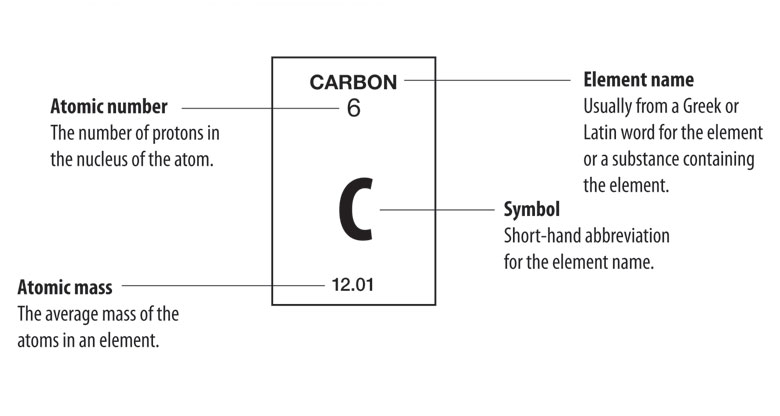
each element block on the periodic table provides key information about that element:
- atomic number: the number at the top of the block, indicating the number of protons in the nucleus.
- element symbol: the one or two-letter abbreviation for the element's name.
- atomic mass: usually found at the bottom, this is the average mass of all the isotopes of that element, measured in atomic mass units (amu).
- some blocks also display the element name and additional properties like electron configurations.
groups (vertical columns) have specific names and share certain characteristics:
- alkali metals (group 1) are highly reactive and have one valence electron.
- halogens (group 17) are reactive nonmetals with seven valence electrons.
- noble gases (group 18) are inert gases with full outer electron shells, making them stable.
periods (horizontal rows) show elements that gradually change properties across the row. moving from left to right, elements transition from metals (which are shiny and conductive) to nonmetals (which are dull and poor conductors), with metalloids in between, which have properties of both.
in summary, the periodic table is a tool that arranges elements based on their atomic structure and properties, with each block providing information like atomic number, symbol, and mass. elements in the same group share similar behaviors, while periods show gradual changes in properties across a row.
elements
### 1. elements overview
elements are pure substances made of only one type of atom, and they cannot be broken down into simpler substances by chemical means. each element has a unique number of protons in its nucleus, which defines its atomic number. there are over 100 known elements, and they form the basis of all matter in the universe.
### 2. most common elements
the most common elements in the universe are hydrogen and helium. however, the most common elements on earth, especially in living organisms, are:
- carbon (c): the backbone of all organic molecules.
- hydrogen (h): found in water and most organic compounds.
- oxygen (o): essential for respiration and water.
- nitrogen (n): a key component of amino acids and nucleic acids.
- calcium (ca): crucial for bone structure and cell signaling.
- phosphorus (p): found in nucleic acids (dna, rna) and energy molecules like atp.
these elements form the building blocks of life, contributing to the structure and function of biological molecules.
### 3. properties of elements
- atomic number: defines the number of protons in the nucleus.
- atomic mass: the total mass of protons and neutrons in the nucleus.
- valence electrons: the electrons in the outermost shell that determine how an element interacts and bonds with other elements.
- electronegativity: the ability of an atom to attract electrons in a chemical bond. elements with higher electronegativity (like oxygen and nitrogen) tend to form polar covalent bonds.
- state at room temperature: elements can be solids, liquids, or gases depending on their atomic structure and interactions (e.g., hydrogen is a gas, while carbon is a solid).
### 4. periodic table groups and properties
the periodic table organizes elements into groups (columns) and periods (rows) based on their atomic structure. elements in the same group have similar properties due to having the same number of valence electrons.
#### group 1: alkali metals
- properties: highly reactive, especially with water, and have one valence electron.
- examples: lithium (li), sodium (na), potassium (k).
- bonding: they easily lose one electron to form ionic bonds with nonmetals, creating compounds like sodium chloride (nacl).
#### group 2: alkaline earth metals
- properties: less reactive than alkali metals, have two valence electrons.
- examples: magnesium (mg), calcium (ca).
- bonding: they typically lose two electrons to form ionic bonds.
#### group 17: halogens
- properties: very reactive nonmetals, seven valence electrons.
- examples: fluorine (f), chlorine (cl).
- bonding: they tend to gain one electron to form ionic bonds with metals or covalent bonds with nonmetals, as in hydrogen chloride (hcl).
#### group 18: noble gases
- properties: very stable and unreactive due to having full valence electron shells.
- examples: helium (he), neon (ne), argon (ar).
- bonding: noble gases rarely form bonds with other elements because of their stability.
#### transition metals
- properties: can form multiple oxidation states, good conductors of heat and electricity.
- examples: iron (fe), copper (cu), gold (au).
- bonding: they can form metallic bonds, as well as covalent and ionic bonds in various compounds.
### 5. polar and nonpolar elements/molecules
- polar molecules: these molecules have a partial positive charge on one side and a partial negative charge on the other. this is usually due to unequal sharing of electrons in a covalent bond, often involving elements like oxygen (o) or nitrogen (n). in polar molecules, there’s an uneven distribution of electrons.
- example: water (h₂o) is a polar molecule because oxygen is more electronegative than hydrogen, causing a dipole.
- nonpolar molecules: these molecules have no overall charge difference across the molecule. the electrons are shared equally between atoms, usually between atoms with similar electronegativities.
- example: oxygen gas (o₂) is nonpolar because the two oxygen atoms share electrons equally.
### 6. hydrophilic and hydrophobic behavior
- hydrophilic: substances that are "water-loving". these substances dissolve well in water because they are polar or can form hydrogen bonds with water molecules.
- example: salt (nacl) is hydrophilic because its ions are attracted to the polar water molecules, causing it to dissolve easily in water.
- hydrophobic: substances that are "water-fearing". these are nonpolar and do not dissolve well in water. instead, they tend to cluster together in water to avoid contact with water molecules.
- example: oil is hydrophobic because its nonpolar molecules cannot interact effectively with water, leading to separation.
### 7. pH in relation to elements
the pH scale measures how acidic or basic a solution is, ranging from 0 (acidic) to 14 (basic), with 7 being neutral. elements can play a role in altering pH through the formation of acids and bases:
- acids: release hydrogen ions (h⁺) when dissolved in water, lowering the pH.
- example: hydrogen chloride (hcl) dissolves in water to form hydrochloric acid, which lowers pH.
- bases: release hydroxide ions (oh⁻) or accept hydrogen ions, raising the pH.
- example: sodium hydroxide (naoh) dissolves in water to form a basic solution.
### 8. bonding between elements
elements bond together through different types of chemical bonds based on their electron configurations:
- ionic bonds: formed when an element donates an electron to another, creating oppositely charged ions that attract each other. typically occurs between metals and nonmetals.
- example: sodium chloride (nacl), where sodium donates an electron to chlorine.
- covalent bonds: formed when two elements share electrons. this type of bond occurs primarily between nonmetals.
- example: in water (h₂o), oxygen shares electrons with two hydrogen atoms.
- metallic bonds: formed between metal atoms where electrons are delocalized and move freely among the atoms, giving metals their conductivity and malleability.
- example: in copper (cu), metallic bonds hold the atoms together, allowing them to conduct electricity.
### summary
elements form the foundation of all matter, with each having distinct properties based on their atomic structure. the periodic table groups elements into categories that share similar chemical behaviors, including the ability to bond in various ways (ionic, covalent, and metallic bonds). the polarity of molecules, along with hydrophilic and hydrophobic behaviors, affects how substances interact with water. additionally, the pH scale is influenced by the presence of acidic or basic elements, reflecting the balance of hydrogen and hydroxide ions in a solution. all these properties are essential to understanding chemical interactions in both living organisms and the environment.
molecules
molecules are groups of two or more atoms bonded together, representing the smallest unit of a compound that still retains its chemical properties. they form when atoms share, lose, or gain electrons, creating stable structures that make up everything around us, from the air we breathe to the cells in our bodies.
there are different types of bonds that hold molecules together:
covalent bonds: occur when atoms share electrons to fill their outer electron shells. this is common in organic molecules like water (h₂o) and carbon dioxide (co₂).
ionic bonds: occur when one atom donates an electron to another, creating positive and negative ions that attract each other. sodium chloride (nacl), or table salt, is an example.
metallic bonds: occur between metal atoms where electrons move freely among them, making metals conductive and malleable.
molecules can be polar or nonpolar:
polar molecules: have regions with slight positive and negative charges due to uneven electron sharing (e.g., water). they can form hydrogen bonds, which makes them interact well with other polar substances.
nonpolar molecules: have an even distribution of electrons, so they don’t have charged regions (e.g., oxygen gas o₂). they don't mix well with polar substances, like water.
molecules are the building blocks of matter, and their structure and bonding types determine how they behave, interact, and combine to form more complex substances.
compounds
### 1. definition
compounds are substances made up of two or more different types of elements that are chemically bonded together. unlike mixtures, compounds have a fixed ratio of elements, meaning their composition is consistent throughout. for example, water (h₂o) is a compound made of two hydrogen atoms and one oxygen atom, always in that ratio.
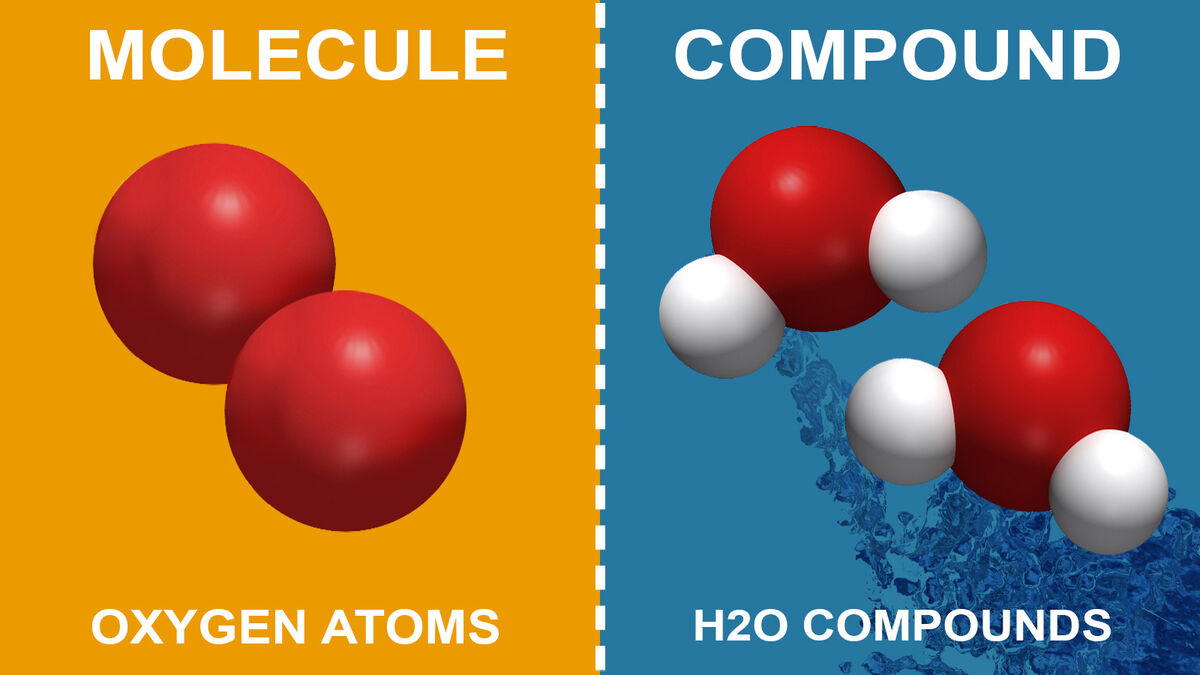
### 2. types of compounds
there are different types of compounds depending on the types of bonds holding the atoms together:
ionic compounds: formed when atoms transfer electrons, creating positive and negative ions. these ions are held together by electrostatic attraction. an example is sodium chloride (nacl), where sodium donates an electron to chlorine.
covalent compounds: formed when atoms share electrons. these bonds are common between nonmetals, such as in carbon dioxide (co₂) and methane (ch₄).
metallic compounds: involve a lattice of metal cations surrounded by a "sea" of delocalized electrons. this is typical in metals like iron (fe) or copper (cu).
compounds can have very different properties from the individual elements that make them up. for instance, sodium (na) is a reactive metal, and chlorine (cl) is a toxic gas, but together they form table salt (nacl), a stable and edible substance.
compounds can be broken down into their elements through chemical reactions, but they cannot be separated physically, like mixtures.
### 3. summary
compounds play a fundamental role in chemistry and biology, forming everything from the simplest salts to the most complex biological molecules.
isotopes
ionized isotopes occur when an isotope of an element gains or loses electrons, resulting in a net charge. here’s how it works:
isotopes: as mentioned earlier, isotopes of an element have the same number of protons (which determines the element) but different numbers of neutrons. this difference in neutrons affects the mass but not the charge of the atom when it is neutral.
ionization: an atom becomes ionized when it gains or loses one or more electrons.
if it loses electrons, it becomes a positively charged ion (cation). for example, if a neutral isotope of sodium (which has 11 electrons) loses one electron, it becomes na⁺, with 10 electrons.
if it gains electrons, it becomes a negatively charged ion (anion). for example, if a neutral isotope of chlorine (which has 17 electrons) gains one electron, it becomes cl⁻, with 18 electrons.
isotopes and ionization: when discussing ionized isotopes, the isotopic variation doesn’t change the ionization process. for instance, if you take two isotopes of chlorine—chlorine-35 (with 18 neutrons) and chlorine-37 (with 20 neutrons)—they can both become cl⁻ by gaining an electron, resulting in the same negatively charged ion, even though they have different masses due to their different neutron counts.
### summary
ionized isotopes retain their identity as isotopes of the same element but differ in their electron counts and overall charges due to the gain or loss of electrons.
lewis dot diagrams

valence electrons
valence electrons are the electrons in the outermost shell of an atom. they are crucial for bonding because they are involved in the formation of chemical bonds.
drawing the diagram
step 1: determine the number of valence electrons: for an atom, you can find this by looking at its group number in the periodic table. for example, carbon (group 14) has four valence electrons.
step 2: write the chemical symbol: place the element's symbol in the center.
step 3: place dots around the symbol: each dot represents one valence electron. place the dots one at a time on each side of the symbol (top, bottom, left, right) before pairing them up. this follows the "hund's rule" which states that electrons will fill unoccupied orbitals before they pair up.
bonding
single bonds: when two atoms share one pair of electrons, it is represented by a single line between the two symbols (e.g., H—H for hydrogen).
double and triple bonds: when two atoms share two or three pairs of electrons, they are represented by double or triple lines, respectively.
octet rule
many atoms tend to bond in such a way that they have eight electrons in their valence shell, resembling the electron configuration of the nearest noble gas. this is known as the octet rule.
example: water (h₂o)
step 1: oxygen has six valence electrons, and each hydrogen has one (total = 8).
step 2: draw the oxygen atom in the center and place one hydrogen on each side.
step 3: share two of the oxygen's electrons with the hydrogens to form two single bonds.
final structure: H—O—H with two lone pairs of electrons remaining on the oxygen.
usefulness
lewis dot diagrams are useful for predicting the shape of molecules, understanding reactivity, and visualizing electron sharing or transfer in chemical reactions.
by using lewis dot diagrams, chemists can gain insights into the properties of molecules and their behavior in chemical reactions.
types of bonds in molecules
molecular bonds are crucial for the formation and stability of compounds. there are three primary types of bonds: covalent bonds, ionic bonds, and metallic bonds.
### 1. covalent bonds
- formation: covalent bonds occur when two atoms share one or more pairs of electrons. this typically happens between nonmetal atoms. the sharing allows each atom to achieve a full valence shell, satisfying the octet rule.
- types:
- single bond: sharing of one pair of electrons (e.g., h₂).
- double bond: sharing of two pairs of electrons (e.g., o₂).
- triple bond: sharing of three pairs of electrons (e.g., n₂).
- how to draw:
- write the symbols of the bonded atoms next to each other.
- use a line to represent each shared pair of electrons. one line = single bond, two lines = double bond, three lines = triple bond.

- example: water (h₂o)
- in the diagram, you would show oxygen in the center, bonded to two hydrogen atoms with single bonds, and indicate lone pairs on the oxygen atom.
### 2. ionic bonds
- formation: ionic bonds form when one atom donates an electron to another, resulting in positively charged cations and negatively charged anions. this usually occurs between metals (which lose electrons) and nonmetals (which gain electrons).
- how to draw:
- write the symbols of the participating ions, with their charges indicated (e.g., na⁺ and cl⁻).
- use brackets to show the charge on the ions, and place the ions next to each other to indicate the attraction between them.
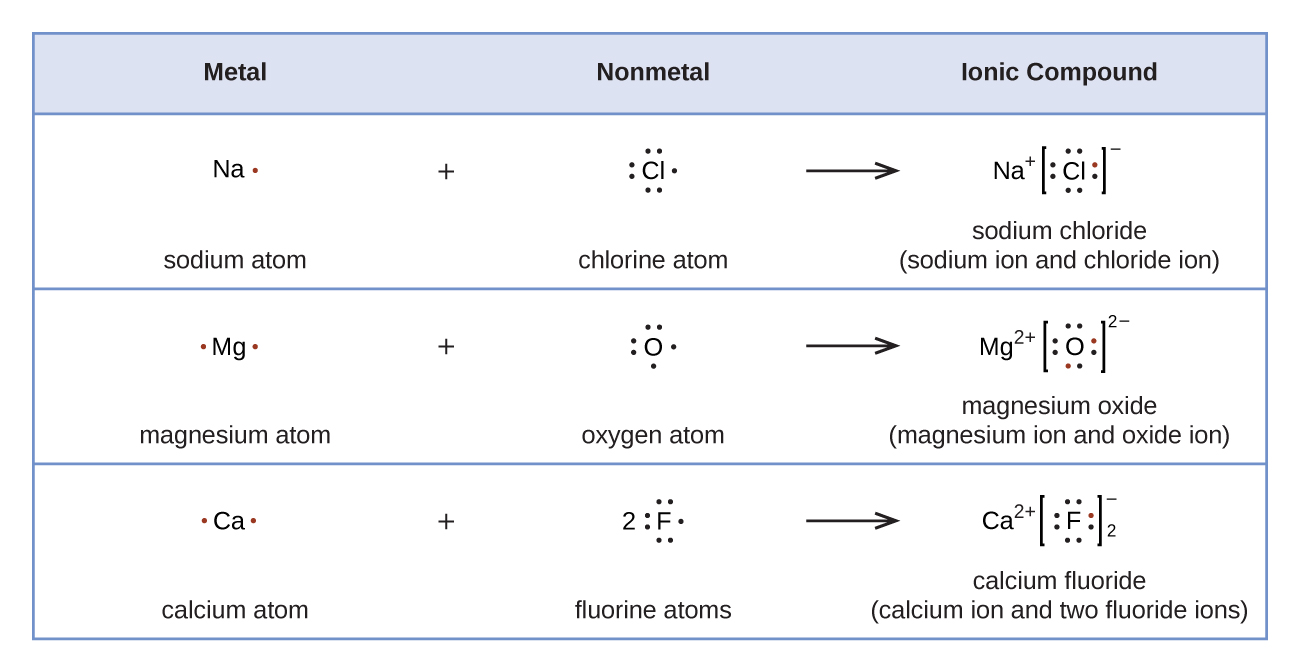
### summary
understanding the types of bonds and how they form helps in predicting the properties of different substances. covalent bonds involve shared electrons, ionic bonds involve electron transfer, and metallic bonds involve a sea of delocalized electrons. the diagrams visually represent these bonds and their interactions in various compounds.
types of bonds between molecules
### 1. hydrogen bonding
definition: a type of weak bond formed when a hydrogen atom covalently bonded to a highly electronegative atom interacts with another electronegative atom.
example: between water molecules (h₂o), where the hydrogen atoms of one molecule are attracted to the oxygen atoms of neighboring molecules.
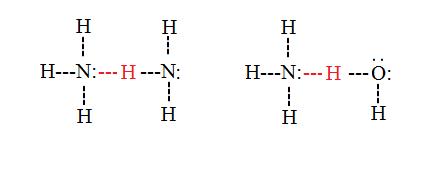
### 2. van der waals forces (dispersion forces)
definition: weak attractions between molecules or parts of molecules due to temporary dipoles.
example: responsible for the cohesion of nonpolar molecules like oils or the adhesion of gecko feet to surfaces.
### 3. dipole-dipole interactions
definition: attractive forces between polar molecules due to their permanent dipoles.
example: interactions between hydrogen chloride (hcl) molecules, where the positive end of one molecule is attracted to the negative end of another.
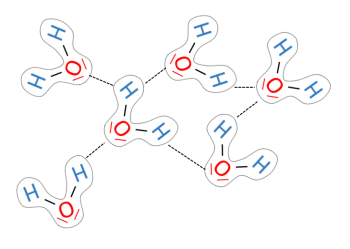
### summary
intramolecular bonds (ionic and covalent) are strong bonds that occur within molecules, while intermolecular forces (hydrogen bonds, van der waals forces, and dipole-dipole interactions) are weaker attractions that occur between molecules. understanding these distinctions is crucial in chemistry and helps explain the properties and behaviors of various substances.
electronegativity
electronegativity is a measure of an atom's ability to attract and hold onto electrons when it forms a chemical bond. it plays a crucial role in determining how elements interact with each other, influencing both the type of bonds they form and the properties of the resulting compounds.
### 1. understanding electronegativity
- scale: electronegativity is typically measured on the paulings scale, developed by linus pauling. the values range from approximately 0.7 (for cesium) to 4.0 (for fluorine, the most electronegative element).
- trends in the periodic table: electronegativity increases across a period (from left to right) because atoms have more protons in their nucleus, which can attract electrons more effectively. it decreases down a group (from top to bottom) due to the increased distance of the valence electrons from the nucleus and increased shielding from inner electrons.
### 2. how electronegativity affects elements and their behavior
- bonding: electronegativity differences between atoms determine the type of bond formed:
- nonpolar covalent bonds: when the electronegativity difference is very small (usually less than 0.4), electrons are shared equally (e.g., h₂ or o₂).
- polar covalent bonds: when the electronegativity difference is moderate (between 0.4 and 1.7), electrons are shared unequally, resulting in a partial positive charge on one atom and a partial negative charge on the other (e.g., h₂o).
- ionic bonds: when the difference is large (greater than 1.7), one atom completely transfers its electron to another, creating charged ions (e.g., nacl).
### 3. is electronegativity the same as polarity?
- electronegativity and polarity are related but not the same:
- electronegativity refers to an atom's ability to attract electrons.
- polarity refers to the distribution of electrical charge within a molecule. a polar molecule has a positive end and a negative end due to unequal sharing of electrons, which is influenced by the electronegativity of the atoms involved.
### 4. examples of electronegative elements
- fluorine (f): has the highest electronegativity (4.0). it attracts electrons strongly, making it highly reactive.
- oxygen (o): with an electronegativity of about 3.5, oxygen is very effective at attracting electrons, which is why it forms polar bonds in water.
- nitrogen (n): has an electronegativity of around 3.0, allowing it to form polar bonds in compounds like ammonia (nh₃).
- chlorine (cl): with an electronegativity of about 3.0, chlorine is also quite electronegative, forming polar bonds in hydrochloric acid (hcl).
in summary, electronegativity is a fundamental property that influences how elements bond and interact. understanding electronegativity helps predict molecular behavior, chemical reactivity, and the nature of compounds.
hydrophobic/hydrophilic
the terms hydrophilic and hydrophobic describe how substances interact with water, significantly influencing their behavior in biological and chemical systems.
### 1. hydrophilic
- definition: hydrophilic substances are "water-loving." they readily interact with water and can dissolve in it. these substances typically have polar molecules or ionic compounds, allowing them to form hydrogen bonds with water molecules.
- examples:
- sugars (e.g., glucose)
- salts (e.g., sodium chloride)
- alcohols (e.g., ethanol)
### 2. hydrophobic
- definition: hydrophobic substances are "water-fearing." they do not interact well with water and do not dissolve in it. these substances usually consist of nonpolar molecules, which do not form hydrogen bonds with water.
- examples:
- oils (e.g., vegetable oil)
- fats (e.g., triglycerides)
- hydrocarbons (e.g., hexane)
### 3. neutral substances
- existence: yes, neutral substances exist. these are compounds that do not exhibit strong hydrophilic or hydrophobic properties. they may have both polar and nonpolar regions, leading to varying degrees of solubility in water.
- examples:
- some larger organic molecules, like certain amino acids, can exhibit both hydrophilic and hydrophobic characteristics due to their structure.
- small, neutral molecules, such as some gases (e.g., oxygen) can dissolve in water to a limited extent.
### 4. how hydrophilic and hydrophobic substances affect behavior
- in biological systems:
- hydrophilic molecules are essential for cellular processes, as they facilitate interactions in aqueous environments (e.g., transport of nutrients and signaling).
- hydrophobic molecules play crucial roles in membrane structure (e.g., phospholipid bilayers), affecting how cells maintain their integrity and communicate.
- in chemical processes:
- the solubility of substances influences reactions, with hydrophilic substances often participating in aqueous reactions, while hydrophobic substances may require different solvents.
### 5. how to tell if a substance is hydrophilic or hydrophobic
- solubility tests: mixing the substance with water can help determine its behavior:
- hydrophilic: if the substance dissolves easily or forms a homogenous mixture with water, it is likely hydrophilic.
- hydrophobic: if the substance does not dissolve or separates into layers when mixed with water, it is likely hydrophobic.
- molecular structure: analyzing the molecular structure can provide clues:
- look for polar functional groups (e.g., hydroxyl -oh, carboxyl -cooh) that suggest hydrophilicity.
- nonpolar structures, often characterized by long hydrocarbon chains or rings, indicate hydrophobic properties.
### summary
understanding hydrophilic and hydrophobic properties is essential for predicting how substances will behave in aqueous environments. these characteristics influence solubility, interactions, and biological functions, ultimately affecting various chemical and biological processes. neutral substances can exist, often exhibiting a mix of both properties, which can complicate their behavior in water.
polar/nonpolar
polar substances have distinct characteristics due to their molecular structure, particularly how electrons are distributed within the molecule.
### 1. definition of polar substances
- polar molecules: polar substances have a distribution of electrical charge that leads to the formation of positive and negative ends (dipoles). this occurs when there is an unequal sharing of electrons between atoms, typically involving atoms with different electronegativities (e.g., oxygen and hydrogen in water).
- dipole moment: the polarity of a molecule is quantified by its dipole moment, a vector quantity that indicates the magnitude and direction of the charge separation.
### 2. characteristics of polar substances
- solubility: polar substances tend to dissolve well in polar solvents (like water) due to their ability to form hydrogen bonds and interact with other polar molecules. this is often summarized by the phrase "like dissolves like."
- intermolecular forces: polar substances exhibit stronger intermolecular forces, such as dipole-dipole interactions and hydrogen bonding, leading to higher boiling and melting points compared to nonpolar substances of similar molecular weight.
### 3. how polarity affects behavior
- in biological systems: polarity plays a crucial role in the behavior of biomolecules:
- polar molecules, such as amino acids and sugars, are essential for cellular functions, including metabolism and transport.
- water's polar nature allows it to dissolve many ionic and polar substances, facilitating biochemical reactions.
- in chemical reactions: the polarity of molecules influences their reactivity. polar solvents are often used in reactions involving polar reagents to ensure proper interaction.
### 4. existence of nonpolar substances
- nonpolar molecules: nonpolar substances exist and typically have an even distribution of electrical charge, resulting from symmetrical molecular shapes or similar electronegativities among bonded atoms.
- examples:
- hydrocarbons (e.g., methane, octane)
- oils and fats
### 5. examples of polar molecules and elements
- water (h₂o): a classic example of a polar molecule due to its bent shape and the electronegativity difference between oxygen and hydrogen.
- ammonia (nh₃): exhibits polarity because of the electronegativity difference between nitrogen and hydrogen and its trigonal pyramidal shape.
- hydrochloric acid (hcl): polar due to the significant electronegativity difference between hydrogen and chlorine, resulting in a dipole moment.
- sucrose (c₁₂h₂₂o₁₁): a polar sugar molecule that dissolves well in water, contributing to its sweet taste.
- ethanol (c₂h₅oh): a polar alcohol that can form hydrogen bonds, making it soluble in water.
polar molecules
co
nh
oh
nonpolar molecules
cc
ch
### summary
polar substances play a vital role in chemistry and biology due to their unique properties, such as solubility in water and strong intermolecular forces. understanding polarity helps predict how substances will behave in various environments, facilitating chemical reactions and biological processes. nonpolar substances also exist and exhibit different behaviors, particularly in their interactions with polar substances.
chemical reactions
dehydration synthesis
dehydration synthesis, also known as condensation reaction, is a chemical process where two molecules are joined together by the removal of a water molecule. this process is crucial in biology, particularly in the formation of larger macromolecules from smaller subunits. here’s a detailed overview:
### 1. definition
- dehydration synthesis is a reaction that combines two molecules, resulting in the formation of a larger molecule and the release of water (h₂o). it typically occurs between functional groups of molecules, such as hydroxyl (-oh) and hydrogen (-h) groups.
### 2. how it works
- during dehydration synthesis, the -oh group from one molecule and the -h from another molecule are removed, forming water. this reaction creates a covalent bond between the two molecules, resulting in a larger compound.
- for example, when two monosaccharides like glucose (c₆h₁₂o₆) combine to form a disaccharide like sucrose (c₁₂h₂₂o₁₁), a molecule of water is released:
glucose + fructose → sucrose + h₂o
### 3. examples in biological systems
- carbohydrates: monosaccharides are linked through dehydration synthesis to form polysaccharides like starch, glycogen, and cellulose. for instance, multiple glucose molecules can combine to form starch, with water released during the bonding process.
- proteins: amino acids are joined by peptide bonds through dehydration synthesis. when two amino acids link, the carboxyl group (-cooh) of one amino acid reacts with the amino group (-nh₂) of another, releasing water and forming a dipeptide:
amino acid 1 + amino acid 2 → dipeptide + h₂o
- nucleic acids: nucleotides are connected via dehydration synthesis to form nucleic acids like dna and rna. when a phosphate group of one nucleotide bonds with the sugar of another, water is released.
### 4. importance of dehydration synthesis
- dehydration synthesis is essential for building complex macromolecules necessary for life, such as carbohydrates, proteins, and nucleic acids.
- it plays a critical role in metabolism and cellular processes, allowing organisms to grow, repair tissues, and store energy.
### summary
dehydration synthesis is a vital chemical reaction in biology that links smaller molecules into larger ones while releasing water. this process is fundamental in forming macromolecules such as carbohydrates, proteins, and nucleic acids, thereby supporting the structure and function of living organisms.
hydrolysis reaction
hydrolysis reaction is a chemical process where a larger molecule is broken down into smaller subunits by the addition of water. this reaction is essential in biology for breaking down complex macromolecules into their constituent parts. here’s a detailed overview:
### definition
- hydrolysis is a reaction that involves the cleavage of chemical bonds in a molecule through the addition of water (h₂o). it typically occurs between functional groups of molecules, such as amines and carboxylic acids.
### how it works
- during hydrolysis, water is used to break the covalent bonds within a larger molecule. one part of the water molecule (h or oh) attaches to one fragment, while the other part attaches to the other fragment, effectively splitting the original molecule into smaller components.
- for example, when a disaccharide like sucrose (c₁₂h₂₂o₁₁) is hydrolyzed, it breaks down into its monosaccharide components, glucose (c₆h₁₂o₆) and fructose (c₆h₁₂o₆), with the addition of a water molecule:
sucrose + h₂o → glucose + fructose
### examples in biological systems
- carbohydrates: polysaccharides such as starch and glycogen are hydrolyzed into their monosaccharide units when enzymes (like amylase) catalyze the reaction, enabling organisms to utilize these sugars for energy.
- proteins: proteins are broken down into amino acids through hydrolysis. when a peptide bond between two amino acids is hydrolyzed, water is added, and the bond is cleaved:
dipeptide + h₂o → amino acid 1 + amino acid 2
- nucleic acids: dna and rna are hydrolyzed into their nucleotide components by enzymes such as nucleases. this process is essential for cellular processes such as replication and transcription.
### importance of hydrolysis
- hydrolysis is crucial for the digestion of food, allowing organisms to break down complex macromolecules into smaller, absorbable units.
- it plays a vital role in metabolism, providing the necessary building blocks (amino acids, monosaccharides, nucleotides) for various biological processes, including energy production and biosynthesis.
### summary
hydrolysis is a vital chemical reaction in biology that breaks down larger molecules into smaller ones by adding water. this process is fundamental for digestion and metabolic pathways, supporting the structure and function of living organisms by providing essential components for cellular activities.
water

water is essential to life for several reasons, primarily due to its unique properties that support biological functions and processes. here’s an overview of its importance, properties, and other related concepts:
importance of water to life
- solvent properties: water is known as the "universal solvent" because it can dissolve many substances, including ionic compounds and polar molecules. this property allows for the transport of nutrients and waste in biological systems.
- temperature regulation: water has a high specific heat capacity, meaning it can absorb and retain heat without a significant change in temperature. this helps regulate temperatures in organisms and environments, providing stability for biochemical reactions.
- participation in chemical reactions: water is involved in many biochemical reactions, including hydrolysis (breaking down molecules) and dehydration synthesis (building larger molecules).
- biological structure: many biological molecules, such as proteins and nucleic acids, require water to maintain their structure and function. water is also a major component of cells, providing shape and support.
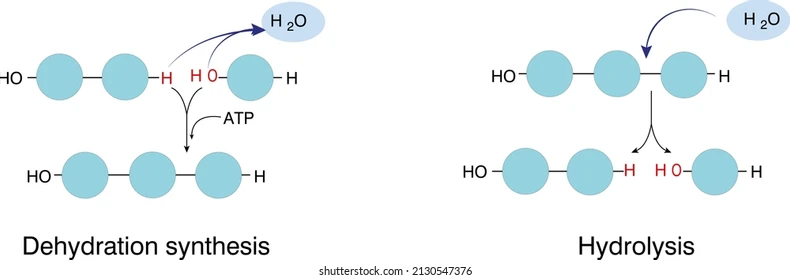
properties of water that make it important
- polarity: water is a polar molecule, which means it has a partial positive charge on one side (hydrogens) and a partial negative charge on the other (oxygen). this polarity allows for hydrogen bonding, contributing to many of water's unique properties.
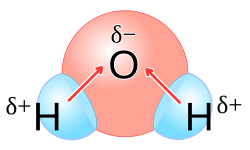
- high heat of vaporization: water requires a large amount of energy to change from a liquid to a gas. this property helps organisms regulate their temperature through processes like sweating and transpiration.
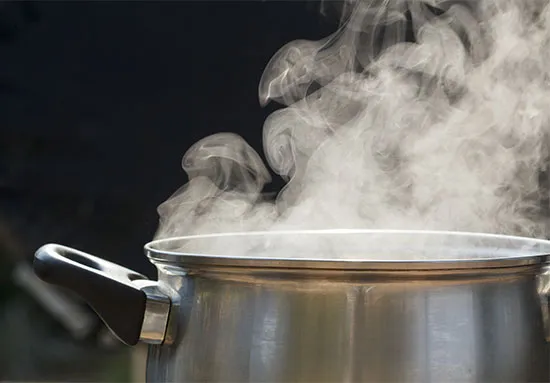
- high surface tension: due to hydrogen bonding, water has a high surface tension, allowing small objects (like water striders) to float and creating a barrier at the surface of water bodies.
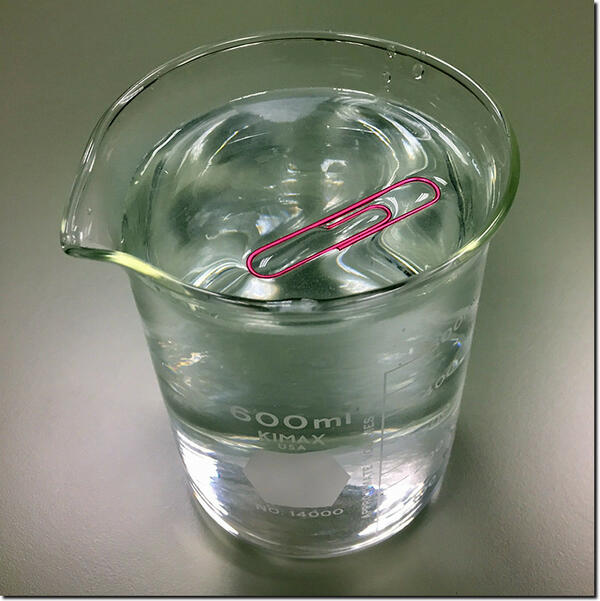
- density and freezing: water is less dense as a solid (ice) than as a liquid, which causes ice to float. this property insulates water bodies in cold weather, protecting aquatic life.
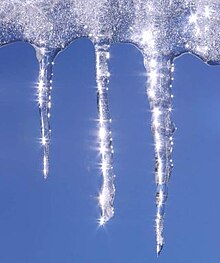
why ionic and polar compounds dissolve in water
- ionic compounds: ionic compounds dissolve in water because the polar water molecules surround the charged ions. the positive end of water molecules (hydrogens) is attracted to negative ions, and the negative end (oxygen) is attracted to positive ions. this interaction breaks the ionic bonds, allowing the ions to disperse in solution.
- polar compounds: polar molecules dissolve in water due to similar polar interactions. the attractions between water molecules and the solute’s polar regions allow for solvation (the process of surrounding a solute particle with solvent molecules).
adhesion vs. cohesion
- cohesion: cohesion is the tendency of water molecules to stick to each other due to hydrogen bonding. this property is important for maintaining the structure of water in droplets and is crucial in processes like water transport in plants.
- adhesion: adhesion is the tendency of water molecules to stick to other substances. this property allows water to climb up plant roots and stems, aiding in nutrient transport through capillary action.
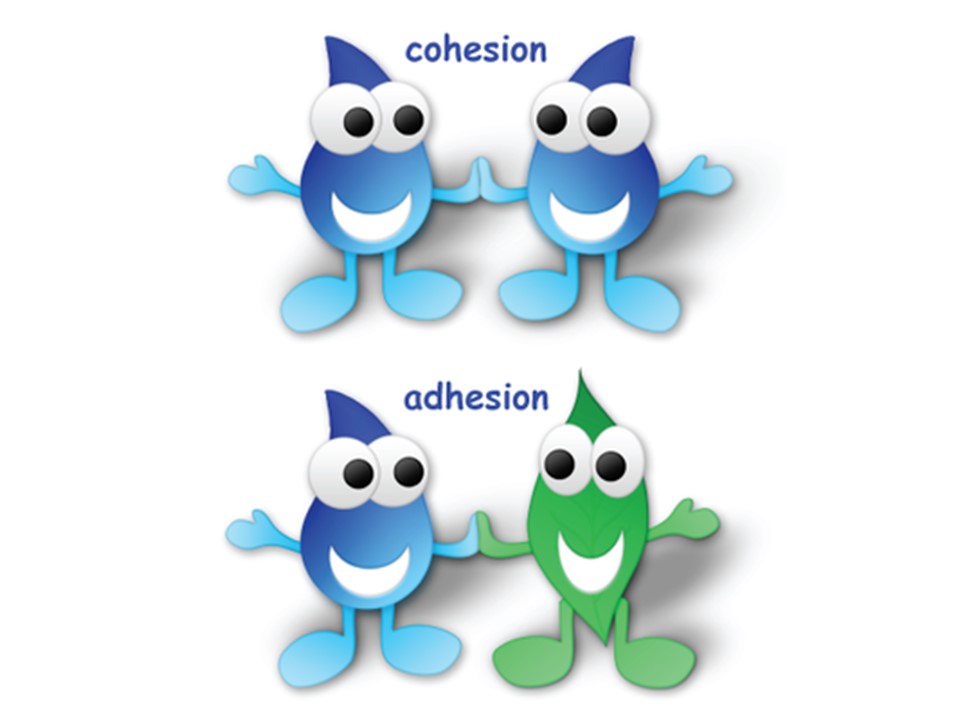
- importance: both cohesion and adhesion are vital for processes like transpiration in plants, where water moves from roots to leaves, and they contribute to the unique properties of water that support life.
the pH scale
- definition: the pH scale measures the acidity or basicity of a solution, ranging from 0 to 14. a pH of 7 is considered neutral, meaning the concentration of hydrogen ions equals the concentration of hydroxide ions. pH stands for "potential of hydrogen". it quantifies the concentration of hydrogen ions (h⁺) present in the solution.
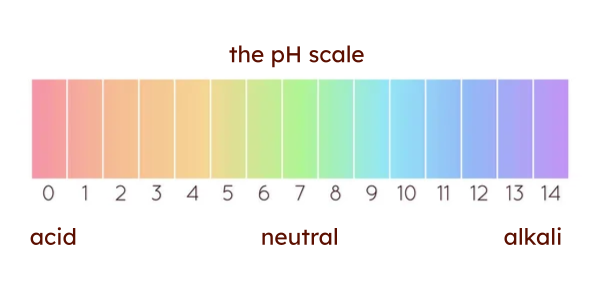
- scale breakdown:
- pH < 7: acidic solutions, with higher concentrations of hydrogen ions (h⁺).
- pH = 7: neutral solution, like pure water.
- pH > 7: basic (alkaline) solutions, with higher concentrations of hydroxide ions (oh⁻).
- logarithmic nature: the pH scale is logarithmic, meaning each whole number change represents a tenfold change in acidity or basicity. for example, a solution with a pH of 3 is ten times more acidic than a solution with a pH of 4.
### acids and bases
- acids: acids are substances that release hydrogen ions (h⁺) in solution. they increase the concentration of hydrogen ions, resulting in a lower pH. common examples include hydrochloric acid (hcl) and sulfuric acid (h₂so₄). acids can donate protons to other substances.
- bases: bases are substances that accept hydrogen ions or release hydroxide ions (oh⁻) in solution. they decrease the concentration of hydrogen ions, leading to a higher pH. examples include sodium hydroxide (naoh) and ammonia (nh₃). bases can accept protons from acids.
summary
water's unique properties make it vital for life, functioning as a solvent, temperature regulator, and participant in chemical reactions. ionic and polar compounds dissolve in water due to interactions with its polar molecules. cohesion and adhesion are important for water transport in plants. acids release hydrogen ions, while bases accept them, affecting pH, which ranges from 0 to 14 and indicates the acidity or basicity of solutions.
organic compounds
functional groups
functional groups are specific groups of atoms within molecules that are responsible for the characteristic chemical reactions of those molecules. here’s an explanation of some important functional groups:
hydroxyl group
the hydroxyl group (-oh) consists of an oxygen atom bonded to a hydrogen atom. it is commonly found in alcohols, such as ethanol. the presence of the hydroxyl group makes these compounds polar, allowing them to form hydrogen bonds and increasing their solubility in water.
carboxyl group
the carboxyl group (-cooh) is a combination of a carbonyl group (c=oo) and a hydroxyl group. it is characteristic of carboxylic acids, such as acetic acid. this group is polar and acidic, meaning it can donate a proton (h⁺) in solution, contributing to the acidity of carboxylic acids.
carboxylic acid
carboxylic acids contain a carboxyl group and are known for their acidic properties. they are commonly found in organic compounds and play essential roles in biochemistry, such as in amino acids and fatty acids.
amino group
the amino group (-nh₂) consists of a nitrogen atom bonded to two hydrogen atoms. it is characteristic of amines and amino acids. the amino group acts as a base, meaning it can accept protons (h⁺) in solution, contributing to the basicity of amino compounds.
r group
the r group is a placeholder used to represent a variable side chain in organic molecules, particularly in amino acids. it can vary widely between different amino acids, giving each one its unique properties and characteristics.
difference between carboxylic and carbonyl groups:
the carbonyl group (c=oo) consists of a carbon atom double-bonded to an oxygen atom. it is found in various functional groups, including aldehydes (where the carbonyl is at the end of a carbon chain) and ketones (where the carbonyl is within the chain). the carboxyl group, on the other hand, is a specific functional group that contains both a carbonyl group and a hydroxyl group (-cooh). thus, all carboxylic acids have a carbonyl group, but not all compounds with a carbonyl group are carboxylic acids.
general
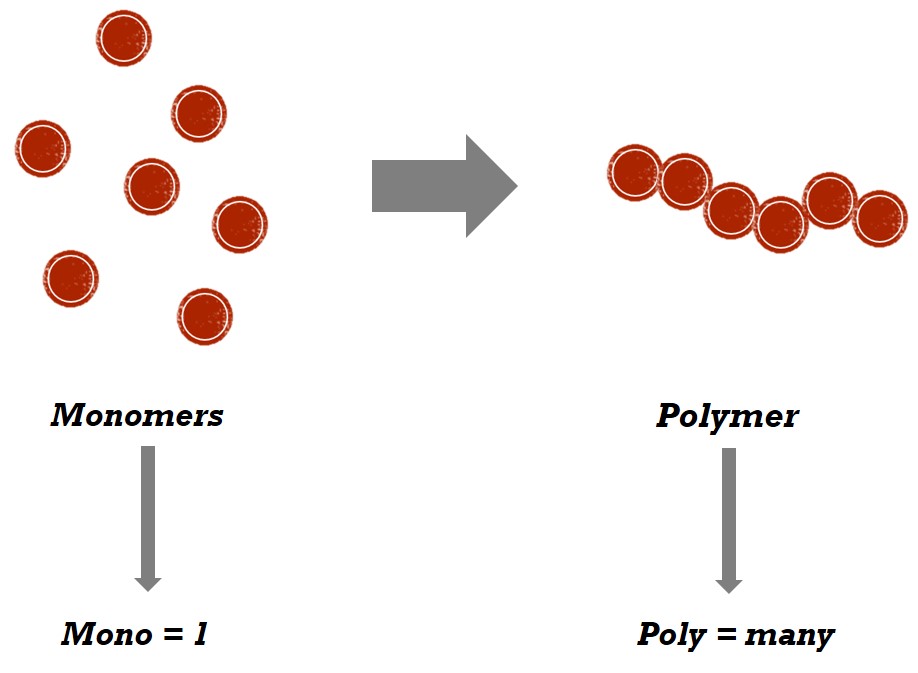
### 1. monomers
monomers are the basic building blocks of larger molecules. they are small, simple molecules that can join together to form more complex structures. for example, glucose is a monomer that can combine to form polysaccharides like starch and cellulose.
### 2. dimers
dimers are molecules composed of two monomers that are chemically bonded together. they can form through a variety of reactions. for instance, two glucose molecules can join to form maltose, a disaccharide, which is a type of dimer.
### 3. polymers
polymers are large molecules made up of many repeating units called monomers. these monomers are linked together through chemical bonds, creating long chains. examples of polymers include proteins (which are made of amino acids), nucleic acids (like dna and rna made of nucleotides), and synthetic materials like plastics (made from repeating units of monomers such as ethylene).
### 4. types of reactions
there are two main types of reactions that involve the formation and breakdown of monomers, dimers, and polymers:
- dehydration synthesis (condensation reaction): this reaction occurs when two monomers combine to form a dimer or polymer, with the release of a water molecule. for example, when two amino acids join to form a dipeptide, a water molecule is released.
- hydrolysis: this reaction is the reverse of dehydration synthesis. it involves the breakdown of a polymer or dimer into its monomers by the addition of water. for example, when a polysaccharide is hydrolyzed, it breaks down into individual monosaccharides.
### summary
monomers are the simplest units that combine to form dimers and polymers, while dehydration synthesis and hydrolysis are the key reactions that facilitate the formation and breakdown of these larger molecules.
carbohydrates
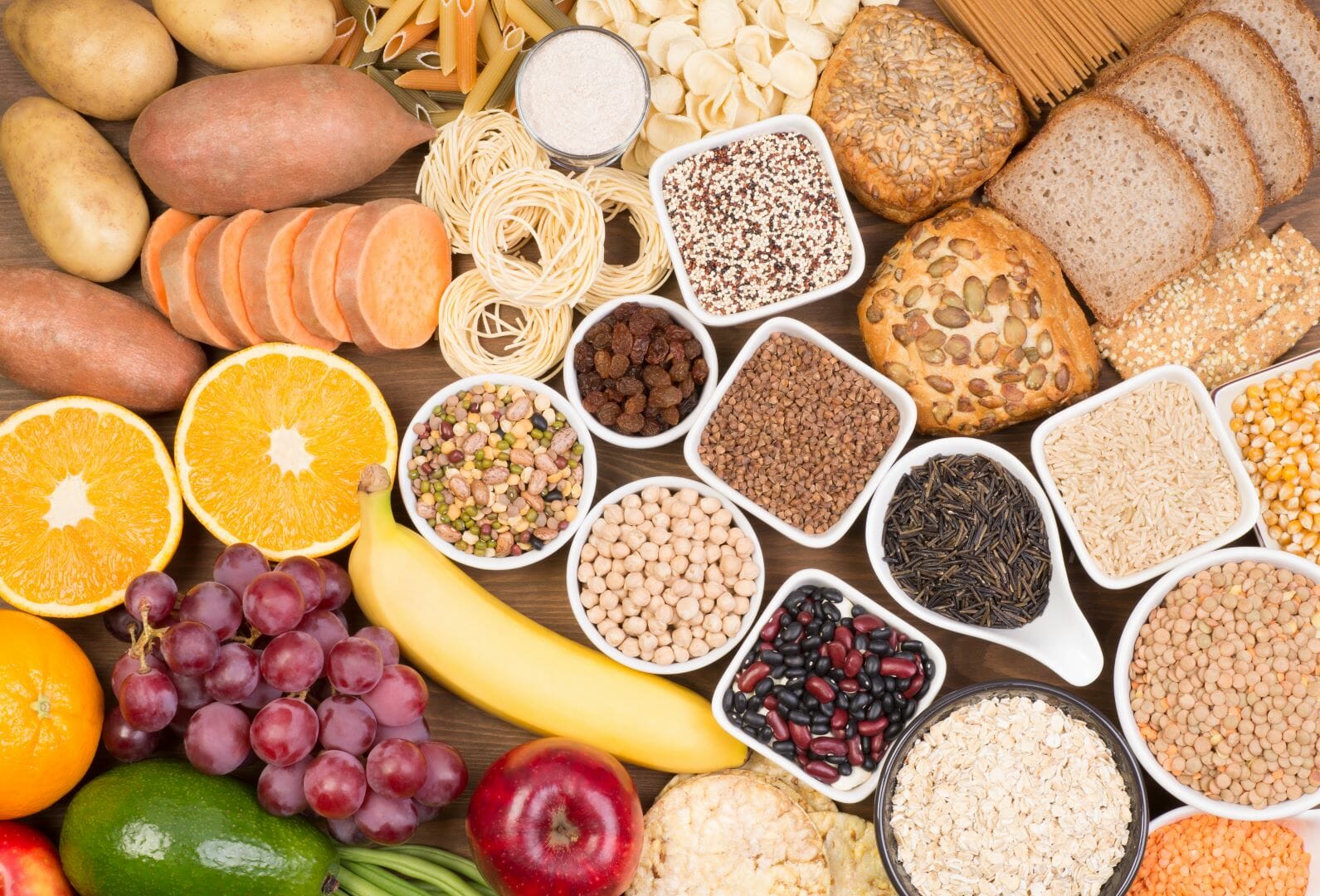
1. types of carbohydrates
carbohydrates are primarily categorized into three main types:
- monosaccharides: these are the simplest form of carbohydrates, consisting of single sugar units. they serve as the basic building blocks for more complex carbohydrates. common examples include:
- glucose: a primary energy source for cells.
- fructose: found in fruits and honey; often referred to as fruit sugar.
- galactose: part of lactose, the sugar found in milk.
- disaccharides: these are formed by the combination of two monosaccharides through a dehydration synthesis reaction. common examples include:
- sucrose: composed of glucose and fructose; commonly known as table sugar.
- lactose: composed of glucose and galactose; found in milk.
- maltose: formed from two glucose molecules; produced during the digestion of starch.
- polysaccharides: these are large, complex carbohydrates made up of many monosaccharide units linked together. they serve various functions in living organisms. common examples include:
- starch: a storage form of energy in plants, made of many glucose units.
- glycogen: a storage form of energy in animals, primarily found in the liver and muscles.
- cellulose: a structural component of plant cell walls, providing rigidity and support.
2. chemistry and functions
carbohydrates are organic compounds composed of carbon (c), hydrogen (h), and oxygen (o), typically in a ratio of 1:2:1. this means that for every carbon atom, there are usually two hydrogen atoms and one oxygen atom. carbohydrates play several essential roles in biology, including:
- serving as a primary source of energy for cells.
- providing structural support in plant cell walls (cellulose) and fungal cell walls (chitin).
- contributing to cell recognition and signaling through glycoproteins and glycolipids.
3. isomers
isomers are compounds that have the same chemical formula but differ in their structure or arrangement of atoms. carbohydrates can exist as different isomers, which can affect their properties and functions. the main types of isomers include:
- structural isomers: these have different arrangements of atoms and functional groups. for example, glucose and fructose both have the formula c₆h₁₂o₆ but differ in their structure and properties.
- stereoisomers: these have the same structural formula but differ in the spatial arrangement of atoms. for example, glucose can exist in two forms, α-glucose and β-glucose, which differ in the orientation of the hydroxyl group on the first carbon atom.
in summary, carbohydrates are essential biomolecules classified into monosaccharides, disaccharides, and polysaccharides, each serving unique functions in living organisms. their chemistry and the presence of isomers contribute to the diversity and functionality of these important compounds.
lipids

1. types of lipids
lipids can be categorized into several main types:
- triglycerides: these are the most common form of lipids and consist of three fatty acid molecules linked to a glycerol molecule. triglycerides serve as a major energy storage form in animals and plants. they can be classified as saturated (no double bonds between carbon atoms) or unsaturated (one or more double bonds).
- phospholipids: these lipids are composed of two fatty acids, a glycerol, and a phosphate group. phospholipids are essential components of cell membranes, forming a bilayer that provides structural integrity and regulates the movement of substances in and out of cells.
- sterols: these are a type of lipid characterized by a multi-ring structure. cholesterol is a well-known sterol that plays a crucial role in maintaining membrane fluidity and serves as a precursor for the synthesis of steroid hormones.
- waxes: these are long-chain fatty acids linked to long-chain alcohols or carbon rings. waxes provide protective coatings in plants and animals, helping to prevent water loss and protect surfaces.
2. structures and chemistry
lipids are primarily composed of carbon (c), hydrogen (h), and oxygen (o), but their structure differs significantly from carbohydrates. lipids are generally hydrophobic (water-repelling) due to their long hydrocarbon chains, making them insoluble in water. their hydrophobic nature allows them to form barriers, such as cell membranes.
3. functions of lipids
lipids perform various essential functions in living organisms, including:
- energy storage: triglycerides store energy for later use, providing a concentrated source of fuel for the body.
- structural components: phospholipids are crucial for forming cell membranes, providing structure and protection.
- insulation: lipids help insulate the body and retain heat, especially in animals.
- signaling molecules: certain lipids, such as steroid hormones, play vital roles in cell signaling and communication.
4. characteristics
lipids have unique properties that distinguish them from other macromolecules:
- hydrophobic: most lipids do not mix well with water due to their nonpolar nature, allowing them to form separate phases in aqueous environments.
- diverse structures: lipids come in various forms and structures, including long-chain fatty acids, ring structures, and complex combinations.
in summary, lipids are a diverse group of hydrophobic biomolecules that play critical roles in energy storage, cell structure, insulation, and signaling in living organisms. their unique chemical properties enable them to perform these essential functions effectively.
proteins
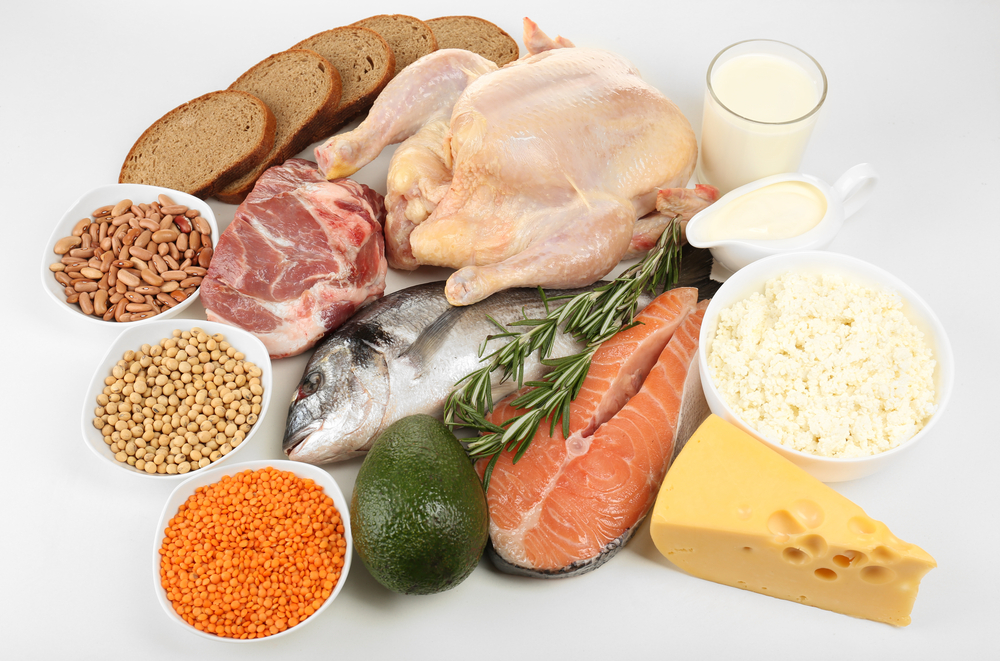
1. structure of proteins
proteins are large, complex molecules made up of long chains of amino acids. the sequence of amino acids determines the protein's unique structure and function. proteins have four levels of structure:
- primary structure: this is the linear sequence of amino acids in a polypeptide chain, held together by peptide bonds.
- secondary structure: this refers to the local folding of the polypeptide chain into structures such as alpha helices and beta sheets, stabilized by hydrogen bonds.
- tertiary structure: this is the overall three-dimensional shape of a protein, formed by interactions between amino acid side chains (r groups) and the surrounding environment.
- quaternary structure: this occurs when two or more polypeptide chains (subunits) come together to form a functional protein. hemoglobin is an example, composed of four subunits.
2. types of proteins
proteins can be categorized into several types based on their functions and structures:
- enzymes: these proteins act as catalysts to speed up chemical reactions in the body. examples include amylase (breaks down starch) and lactase (breaks down lactose).
- structural proteins: these provide support and shape to cells and tissues. examples include collagen (found in connective tissues) and keratin (found in hair, nails, and skin).
- transport proteins: these carry molecules across cell membranes or within the bloodstream. hemoglobin, which transports oxygen in red blood cells, is a well-known example.
- antibodies: these proteins are part of the immune system and help defend the body against pathogens. they recognize and bind to foreign substances (antigens).
- hormones: some proteins act as hormones, which are signaling molecules that regulate various physiological processes. insulin, for example, helps regulate blood sugar levels.
3. functions of proteins
proteins play a crucial role in nearly every biological process, including:
- catalyzing reactions: enzymes accelerate chemical reactions, allowing metabolic processes to occur efficiently.
- providing structure: proteins contribute to the structure of cells, tissues, and organs.
- transporting substances: proteins facilitate the movement of molecules across membranes and throughout the body.
- defending against pathogens: antibodies protect the body from infections and diseases.
- regulating biological processes: hormones and signaling proteins help coordinate physiological responses.
4. importance of proteins
proteins are vital for maintaining life. they are involved in nearly all cellular functions and processes. the diversity of protein structures and functions enables organisms to adapt to their environments and carry out complex biological tasks.
in summary, proteins are essential macromolecules made up of amino acids that perform a wide range of functions in living organisms. their diverse structures allow them to catalyze reactions, provide support, transport molecules, and regulate biological processes, making them critical for life.
nucleic acids
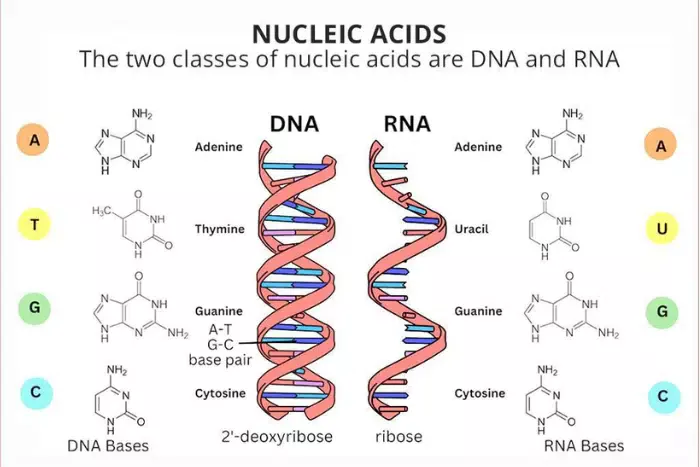
1. structure of nucleic acids
nucleic acids are polymers made up of monomers called nucleotides. each nucleotide consists of three components:
- a phosphate group: this is a phosphorus atom bonded to four oxygen atoms and gives nucleic acids their acidic properties.
- a sugar: this is a five-carbon sugar; in dna, it is deoxyribose, while in rna, it is ribose.
- a nitrogenous base: this can be one of four types. in dna, the bases are adenine (a), thymine (t), cytosine (c), and guanine (g). in rna, thymine is replaced by uracil (u).
nucleic acids have two main types based on their structure:
- deoxyribonucleic acid (dna): dna is typically double-stranded, with two strands twisted into a double helix. the strands are held together by hydrogen bonds between complementary base pairs (a-t and g-c).
- ribonucleic acid (rna): rna is usually single-stranded and can fold into various shapes. it contains the bases a, u, c, and g.
2. types of nucleic acids
nucleic acids can be categorized into two main types:
- dna: serves as the genetic material in most organisms, carrying the instructions for the development, functioning, growth, and reproduction of all living things. it is responsible for heredity and genetic information storage.
- rna: plays several roles in protein synthesis and gene expression. there are various types of rna, including:
- messenger rna (mRNA): carries genetic information from dna to the ribosome for protein synthesis.
- transfer rna (tRNA): brings amino acids to the ribosome during protein synthesis, matching them to the codons in mRNA.
- ribosomal rna (rRNA): a structural and functional component of ribosomes, where proteins are synthesized.
3. functions of nucleic acids
nucleic acids perform several essential functions in living organisms:
- genetic information storage: dna stores and transmits genetic information necessary for the growth and development of organisms.
- protein synthesis: rna plays a crucial role in translating the genetic code into proteins, which are essential for various cellular functions.
- regulation of gene expression: rna molecules can also regulate the expression of genes, influencing which proteins are produced and when.
4. importance of nucleic acids
nucleic acids are vital for life, as they carry the genetic blueprint for all living organisms and facilitate the process of protein synthesis. they are crucial for heredity, evolution, and the functioning of cells.
in summary, nucleic acids are essential biomolecules composed of nucleotides that serve as the genetic material in organisms and play critical roles in protein synthesis. their structure and function enable them to store, transmit, and express genetic information, making them fundamental to life.